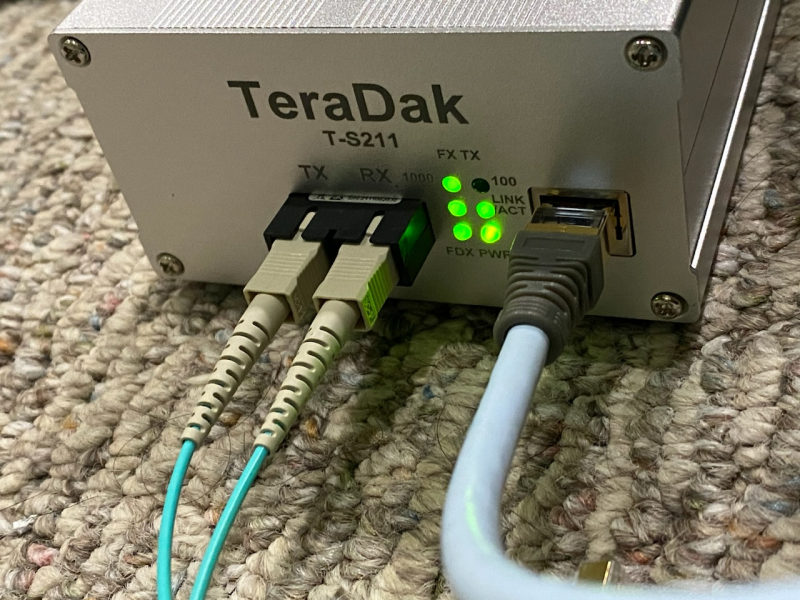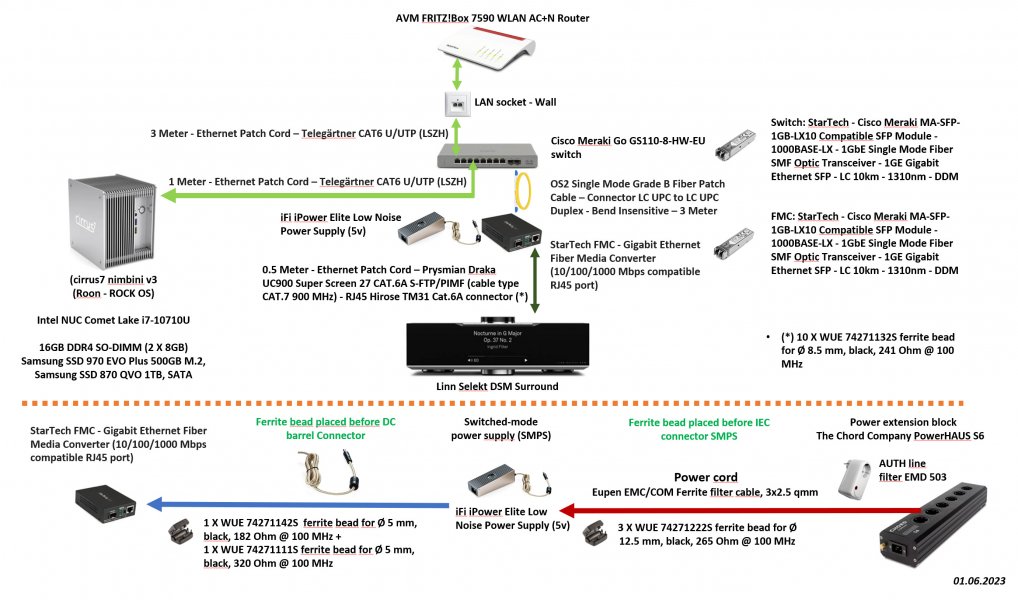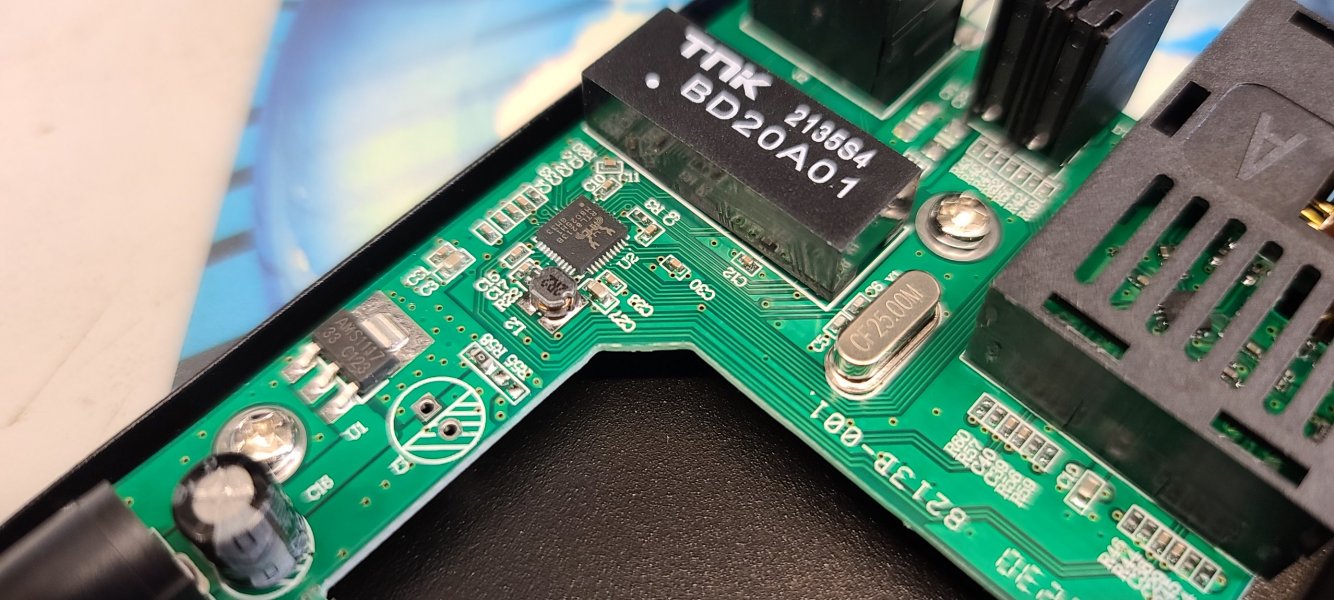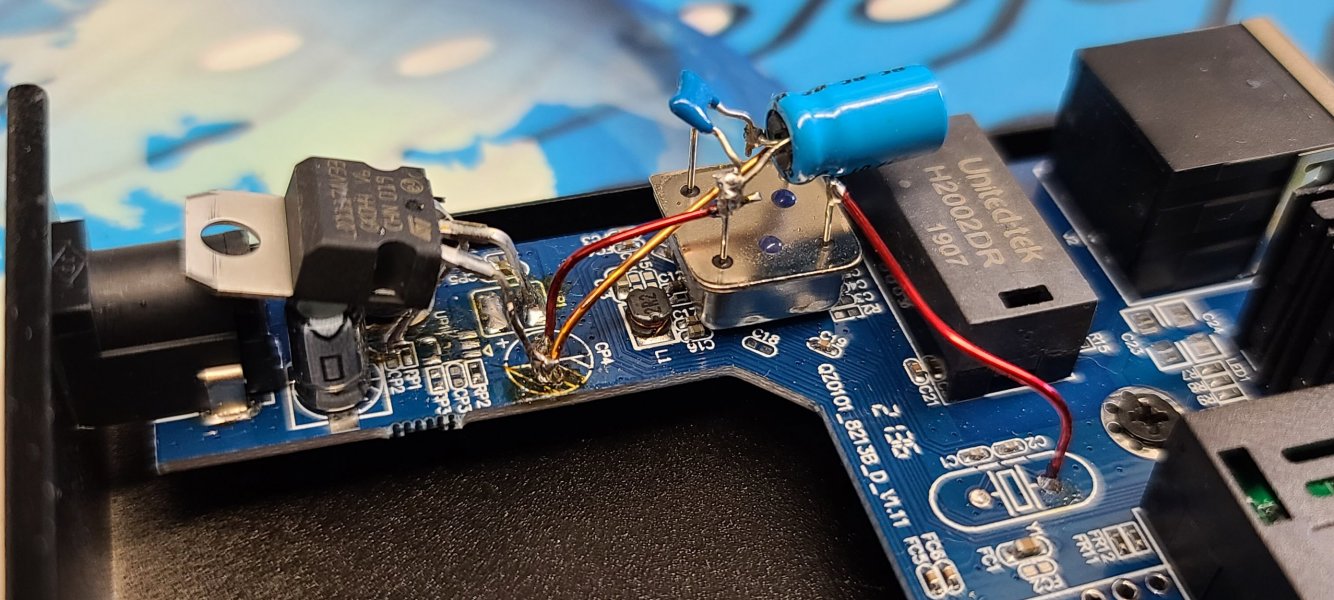I see a lot of discussion going on regarding digital audio networks, data transport and noise.
All of these are closely related and all have effect on sound quality.
Let me share a few things that have worked real good in the various setups I've had to make at the past audio shows...
Below is a typical setup in a home situation (image source credit: upscale audio - edited for this post)
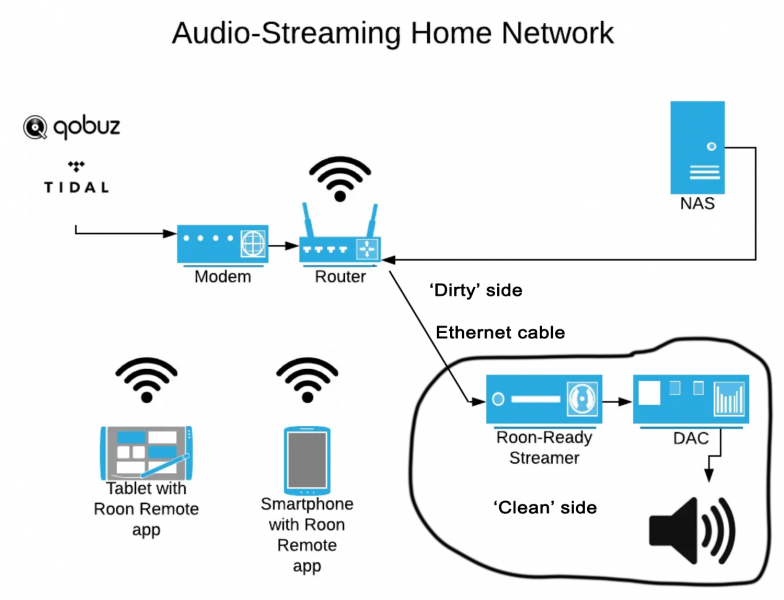
For sake of discussion, this image shows a Roon implementation but this can be any streaming app or equipment.
Note that I have separated the image into a 'clean' and 'dirty' section.
The general idea is to have only clean linear power supplies and equipment in the clean side, and whatever dirty equipment (including switches, routers, wall adapters etc) on the dirty side.
The data connection going from the dirty to the clean side is a very important one, the trick that works a little magic is to replace this connection to a set of fiber media converters with a fiber line between them.
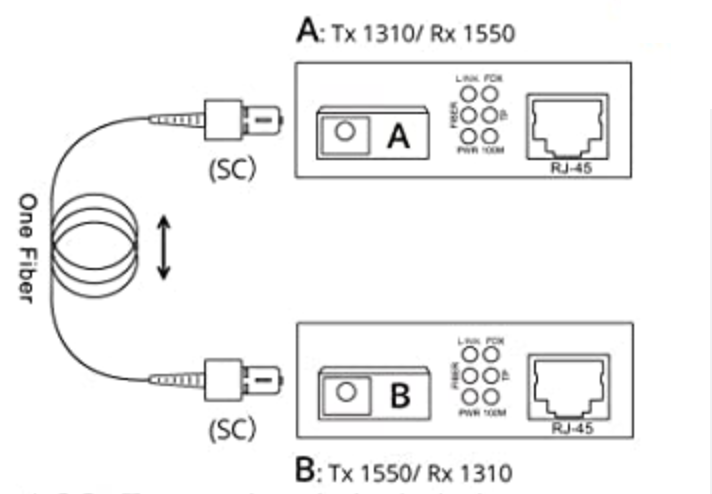
In this case, unit A is on the 'dirty' side and can be powered by a switched mode power supply wall adapter, unit B however is on the 'clean' side and MUST be powered by a linear power supply.
Noise from the 'dirty' side of the network will not be jumping over to the 'clean' side through the fiber connection, and the audio data gets re-clocked by nature of the way these media converters work.
These converters are generally easy to source, they are even sold on Amazon.
For fiber between them, I like the Single mode APC best (the green connectors, not the blue UPC ones)
For the difference between APC and UPC cable read this: https://www.belden.com/blogs/upc-or-apc
Note: some of these have a linear power regulator in them (LD1117-3.3), those are great! However some of them have a small switcher in the unit, these must be replaced by a linear regulator. I've seen both of these around in various units I opened.
Bonus: replace the crystal in unit B for an ultra low phase jitter oscillator (these things run on 25MHz) and be amazed of the resulting audio quality.
Fun part of this is that it solves many of the problems that otherwise are tried to remediate by using special 'audiophile' switches etc, or expensive ethernet cables or whathaveyou, all to try optimize the 'dirty' side, where EVERYTHING has an effect but not as much as simply cleaning it up this way....
Below a picture of our 'clean' side behind the scenes at Axpona Chicago just over a week ago:
The yellow cable is the fiber coming from the 'dirty' end, going into the fiber media converter with linear power supply at the clean end.
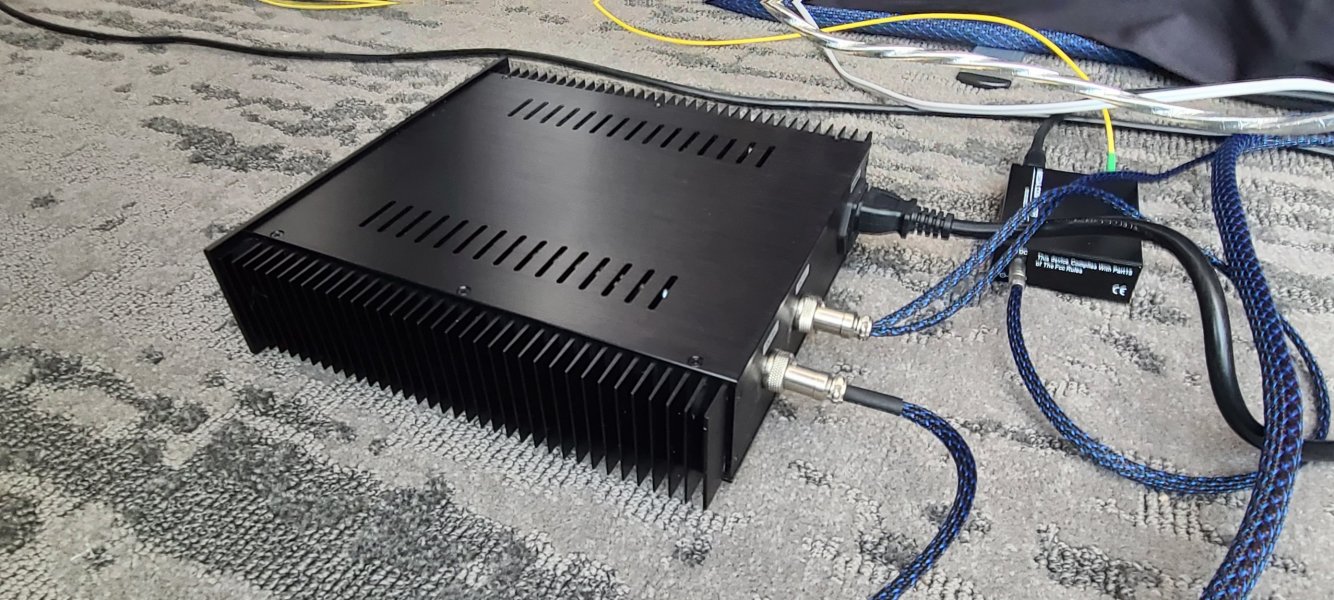
Hope this may be of help.
Cheers, Hans.
All of these are closely related and all have effect on sound quality.
Let me share a few things that have worked real good in the various setups I've had to make at the past audio shows...
Below is a typical setup in a home situation (image source credit: upscale audio - edited for this post)

For sake of discussion, this image shows a Roon implementation but this can be any streaming app or equipment.
Note that I have separated the image into a 'clean' and 'dirty' section.
The general idea is to have only clean linear power supplies and equipment in the clean side, and whatever dirty equipment (including switches, routers, wall adapters etc) on the dirty side.
The data connection going from the dirty to the clean side is a very important one, the trick that works a little magic is to replace this connection to a set of fiber media converters with a fiber line between them.

In this case, unit A is on the 'dirty' side and can be powered by a switched mode power supply wall adapter, unit B however is on the 'clean' side and MUST be powered by a linear power supply.
Noise from the 'dirty' side of the network will not be jumping over to the 'clean' side through the fiber connection, and the audio data gets re-clocked by nature of the way these media converters work.
These converters are generally easy to source, they are even sold on Amazon.
For fiber between them, I like the Single mode APC best (the green connectors, not the blue UPC ones)
For the difference between APC and UPC cable read this: https://www.belden.com/blogs/upc-or-apc
Note: some of these have a linear power regulator in them (LD1117-3.3), those are great! However some of them have a small switcher in the unit, these must be replaced by a linear regulator. I've seen both of these around in various units I opened.
Bonus: replace the crystal in unit B for an ultra low phase jitter oscillator (these things run on 25MHz) and be amazed of the resulting audio quality.
Fun part of this is that it solves many of the problems that otherwise are tried to remediate by using special 'audiophile' switches etc, or expensive ethernet cables or whathaveyou, all to try optimize the 'dirty' side, where EVERYTHING has an effect but not as much as simply cleaning it up this way....
Below a picture of our 'clean' side behind the scenes at Axpona Chicago just over a week ago:
The yellow cable is the fiber coming from the 'dirty' end, going into the fiber media converter with linear power supply at the clean end.

Hope this may be of help.
Cheers, Hans.


